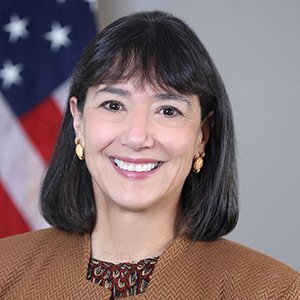In recognition of Asthma Awareness Month, Environmental Factor shares the latest discoveries made by NIEHS scientists and grant recipients related to the chronic respiratory disease.
Asthma, which is characterized by coughing, wheezing, chest tightness, and shortness of breath, affects about 25 million people in the United States, including 4.7 million children and adolescents. In 2021, more than 3,500 people across the country died from asthma-related causes.
The following examples of recently published research aim to improve the diagnosis, treatment, and prevention of asthma by better understanding the environment’s role in the disease.

Majority of clinicians do not frequently assess environmental asthma triggers
Environmental assessment and recommendations to patients vary considerably among asthma care providers, according to NIEHS researchers and their collaborators. A higher percentage of specialists assessed asthma triggers at home, school, or work than primary care or advanced practice providers. However, 46%-76% of clinicians, depending on clinician type, reported not assessing triggers almost always during asthma visits. Read the full summary.
Plasma proteomic signatures of adult asthma
A large-scale proteomics study identified more than 100 plasma proteins associated with asthma in adults, according to NIEHS researchers and their collaborators. In addition to validating previous associations, the researchers identified many novel proteins that could inform the development of diagnostic biomarkers and therapeutic targets in asthma management. Read the full summary.
Targeting the root cause of asthma
Housing policy may be a tool to reduce childhood asthma disparities, according to recent findings from the NIEHS-funded Mobility Asthma Project. As reported in the Journal of the American Medical Association, children who move to neighborhoods with lower rates of poverty experience significant improvements in asthma symptoms, in part by reducing stress. Read the full article.
Why anti-thromboxane therapies have failed in asthma clinical trials
Thromboxane A2 (TXA2) can dampen the immune response in the allergic lung, which may have important therapeutic consequences, according to NIEHS researchers and their collaborators. In contrast to its acute, pro-inflammatory, and bronchoconstrictive effects, TXA2 also has longer-lasting immunosuppressive effects that attenuate Th2 and Th9 cell differentiation that drives asthma progression. These results help explain the failure of anti-thromboxane therapies and suggest that targeting the TXA2/TP receptor signaling pathway may lead to the development of novel asthma treatments. Read the full summary.
Community-level characteristics modify childhood asthma risk
Early-life air pollution exposure is associated with increased childhood asthma incidence, with higher risk among minoritized families living in densely populated communities, according to NIEHS-funded researchers. Their results suggest that exposure to fine particulate matter (PM) smaller than 2.5 microns in diameter (PM2.5) and nitrogen dioxide (NO2) may play a role in the development of asthma by early and middle childhood in communities characterized by fewer opportunities and resources and multiple environmental exposures. Read the full article.
Additional resources to explore
- For resources on the prevention, treatment, and management of asthma, check out the NIH Learn More Breathe Better® program.
- Lower allergen levels in your home by reviewing these tips on the NIEHS asthma webpage.
- Join an asthma study to help scientists understand how bacteria and other factors in the environment affect people who have moderate to severe asthma.
- Learn about new research exploring the asthma-air pollution connection.
- Check out the asthma research portal from the National Institute of Allergy and Infectious Diseases.
(Janelle Weaver, Ph.D., is a contract writer for the NIEHS Office of Communications and Public Liaison. Caroline Stetler is Editor-in-Chief of the Environmental Factor, produced monthly by the NIEHS Office of Communications and Public Liaison.)









